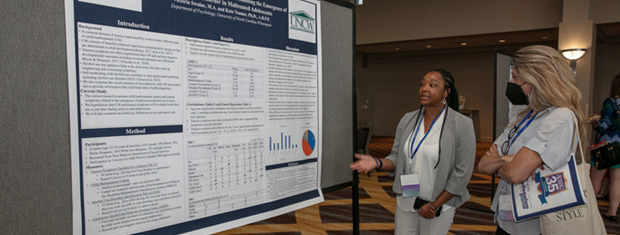




The APSAC Advisor is a peer reviewed quarterly news journal for professionals in the field of child abuse and neglect.
The APSAC Advisor provides succinct, data-based, practice-oriented articles that keep interdisciplinary professionals
informed of the latest developments in policy and practice the field of child maltreatment. It is designed to highlight
best practices in the field and publish original articles and current information about child maltreatment for professionals
from a variety of backgrounds including medicine, law, law enforcement, social work, child protective services, psychology,
public health and prevention in the U.S.
 If you wish to learn more about submitting an article to the Advisor, please click here.
If you wish to learn more about submitting an article to the Advisor, please click here.
This library contains Advisor issues dating back to the first issue in 1988. The most recent issue appears at the top.
Scroll down to select past issues by year and issue number. Once a publication appears in the box, you
can use the Enlarge button to open the document in a new window or tab (depending on how your browser is set up).
This will allow you to view the document with larger print.
To print a document, first use the Enlarge button to open the document in a new window or tab. Then use your browser's Print command.
To return here from a new tab, close the tab. To return from a new window, click your browser's Back button.
In the listing below, click on a year and issue number to see the articles in that publication.
2013 Number 3
Violence Against Children in Indian Country: What World Do We Leave for Seven Generations to Come?
The author reviews some of the historical underpinnings of child maltreatment in Indian country, noting that while physical abuse has been historically unacceptable for Native Americans, assimilation into the dominant philosophy and tolerances of today has replaced longstanding indigenous paradigms, ceremonies, and customs. The forced used of boarding schools, role of tribes, federal legislation, and other effects on the family leading to child maltreatment and drug exposed children are reviewed. He concludes by discussing the difficulties of law enforcement in responding to these problems and what we can do to restore healthy communities.
Child Sexual Abuse in Indian Country: Prevalence, Disclosure, and Criminal Case Outcomes
The author discusses child sexual abuse (CSA) in Indian country, reviewing what is known about its epidemiology and characteristics of CSA episodes. He also reviews the disclosure rates, the professional responses after disclosure, outcomes, and the problems faced during investigation. He argues that children in Indian country are at increased risk for CSA and that the systems in place to control it have been less effective in protecting them.
The Invisible Victims of Human Trafficking in Indian Country
The author discusses the hidden epidemic of human trafficking in Indian country, noting that only recently do we have estimates of the numbers of minors at risk for this form of exploitation. He states that Native females are trafficked at disproportionate levels due to risk factors correlated with prostitution, and in some regions, limited resources on the reservation and jurisdictional complexities create a favorable environment for traffickers to prey upon young Native females. He concludes that any effective response must stop criminalizing the victims, increase access to culturally appropriate housing and holistic care for victims, build community support through honest dialogue, and hold perpetrators accountable.
The Key to Indian Country: Lessons Learned From Front Line Professionals
The authors recount some experiences of child protection professionals in Indian country, highlighting a handful of recurring themes in order to crystallize for all of us the challenges they face. Beginning with something as simple as lacking a key to the interview suite, they describe the importance of a sled dog, an oral tradition, sharing materials in advance of training, the role of spirituality, recognizing abilities, understanding the depth of pain, and the importance of learning. They conclude that what is important is not what we can bring to Indian country but what child protection professionals in Indian country can bring to all of us.
The purpose of Journal Highlights is to alert readers to current literature on child abuse. Selected articles from journals representing the variety of disciplines reflected in APSAC's membership are presented in the form of an annotated bibliography.
APSAC Advisor 25(3): Full Issue